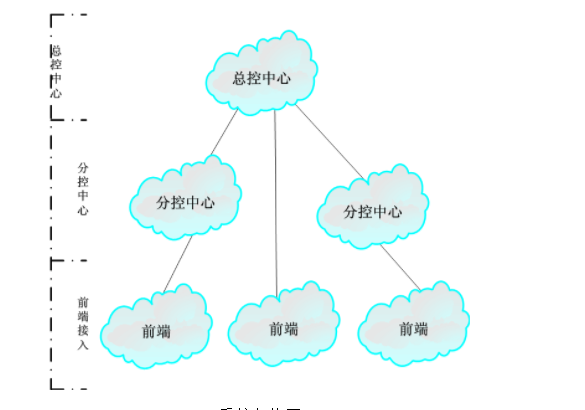Artificial Intelligence
Security monitoring four major NVR chip comparison
In today’s competitive video surveillance market, where numerous NVR solutions are available, how can video surveillance vendors maintain a competitive edge for their NVR products? In this article, Xiaobian will explore the current mainstream NVR chip solutions on the market. We’ll take a closer look at their market share, strategic approaches, product lines, and the pros and cons of each solution.
Over the past few years, the IPC + NVR combination has gained significant traction due to its cost-effectiveness and flexible deployment options. As more manufacturers enter the NVR space, the market has seen substantial growth. At the heart of every NVR system lies the chip, which plays a crucial role in determining performance, cost, and overall market positioning. To stay ahead, leading chip manufacturers continue to innovate, developing high-definition chips with enhanced decoding and processing capabilities.
Currently, the four main NVR chip solutions dominating the market are the TI DM816X series, HiSilicon 35XX series, Entropic EN7530 series, and Marvell ARMADA XP series. In the following sections, we’ll provide an overview of each manufacturer’s market strategy, product range, and key advantages and disadvantages.

**First: TI DM816X Series**
As a long-standing player in the video surveillance industry, Texas Instruments (TI) has a strong track record in both IPC and NVR applications. The DM816X series is known for its excellent performance and is widely used by manufacturers like Hikvision for project-based NVRs and network decoders.
The DM81XX series is considered one of the most flexible and programmable DSPs available, allowing for the creation of innovative products. This flexibility was a key design goal for TI, and it's one of the main reasons why companies like Hikvision have chosen these chips. For example, the DM8165 chip can be configured with up to 2GB of memory and supports the access and forwarding of 160M network IPC resources, as well as decoding 16 channels of 1080P video.
Since its launch in 2010, the DM816X series has undergone only minor architectural improvements. Despite this, its processing power remains ahead of many competitors. TI's focus on core underlying technologies ensures its technological leadership, but this also means that its investment in application development has been limited.
Two main drawbacks include:
1. **Limited Application Support**: NVR manufacturers often need to invest significant R&D resources to develop their own applications. Larger companies like Hikvision can afford this, but smaller manufacturers find it challenging. In contrast, domestic chip manufacturers such as HiSilicon have started to offer built-in cloud services, making it easier for NVR makers to develop cloud-ready solutions quickly.
2. **High Cost**: Due to its advanced technology, TI's chips come with higher R&D and production costs. As competition in the NVR market intensifies, the high price of TI chips has made them less attractive to smaller players. Today, only a few manufacturers, mainly those targeting high-end or specialized markets (such as video conferencing and telephony), still use TI's NVR chips.
**Second: HiSilicon 35XX Series**
HiSilicon has emerged as a major player in the upstream chip market, and its performance in the video surveillance industry has been impressive. In the NVR market, HiSilicon has launched high-end models like the 3531 and 3535, while continuously improving and expanding its low-end offerings, including optimized versions like 3515A and 3520D.
This wide range of chips covers different market segments, from high-end to budget-friendly options, enabling NVR manufacturers to create a variety of products tailored to specific needs. The diversity of HiSilicon's product lineup has contributed to the overall growth and vitality of the NVR market.
What sets HiSilicon apart is its strong focus on application support and cost efficiency. While its chips may not be the most technologically advanced compared to TI, HiSilicon provides comprehensive development kits that significantly lower the entry barrier for SMEs. This allows even small companies to develop functional products with minimal investment.
Additionally, HiSilicon's chips are cost-effective, even if their performance is slightly lower than some competitors. However, they are sufficient for most typical applications. In short, HiSilicon's chips may not be the top in terms of technical innovation, but they are highly practical and meet the current market demand effectively.
Today, most NVR manufacturers, including Zhejiang Dahua, Shanghai Weishiqing, and Hangzhou Xiongmai, rely on HiSilicon chips for their products.
This Automation curtain is specially designed for automation industry. SDKELI LSC2 light curtain is designed for automation field, with small size, compact structure and strong anti-interference ability, and the product meets IEC 61496-2 standards. The automatic light curtain is with reliable quality and very competitive price. It has been used in many factories.
Automatic Light Curtain,Laser Light Curtain,Automation Light Beam Sensor,Automatic Infrared Beam Sensor,Infrared Beam Curttain Sensor,Infrared Beam Sensor
Jining Keli Photoelectronic Industrial Co.,Ltd , https://www.sdkelien.com